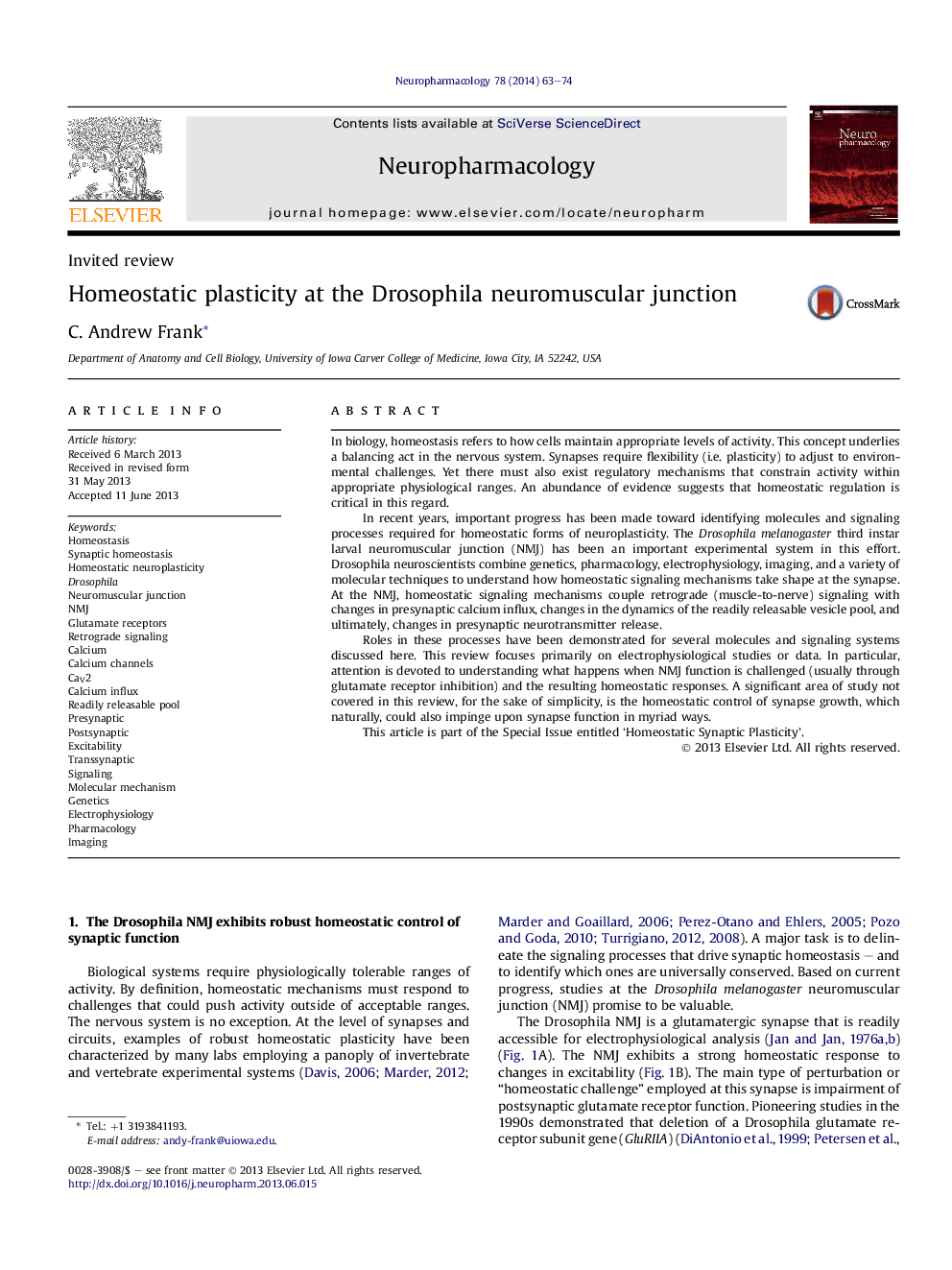| کد مقاله | کد نشریه | سال انتشار | مقاله انگلیسی | نسخه تمام متن |
|---|---|---|---|---|
| 2493315 | 1556636 | 2014 | 12 صفحه PDF | دانلود رایگان |

• A summary of homeostatic plasticity at the Drosophila neuromuscular junction (NMJ).
• Electrophysiological results demonstrating homeostatic control of NMJ function.
• Current understanding of molecular mechanisms that drive synaptic homeostasis.
• Presynaptic and postsynaptic molecules controlling NMJ homeostasis.
• Notable connections with other experimental systems.
In biology, homeostasis refers to how cells maintain appropriate levels of activity. This concept underlies a balancing act in the nervous system. Synapses require flexibility (i.e. plasticity) to adjust to environmental challenges. Yet there must also exist regulatory mechanisms that constrain activity within appropriate physiological ranges. An abundance of evidence suggests that homeostatic regulation is critical in this regard.In recent years, important progress has been made toward identifying molecules and signaling processes required for homeostatic forms of neuroplasticity. The Drosophila melanogaster third instar larval neuromuscular junction (NMJ) has been an important experimental system in this effort. Drosophila neuroscientists combine genetics, pharmacology, electrophysiology, imaging, and a variety of molecular techniques to understand how homeostatic signaling mechanisms take shape at the synapse. At the NMJ, homeostatic signaling mechanisms couple retrograde (muscle-to-nerve) signaling with changes in presynaptic calcium influx, changes in the dynamics of the readily releasable vesicle pool, and ultimately, changes in presynaptic neurotransmitter release.Roles in these processes have been demonstrated for several molecules and signaling systems discussed here. This review focuses primarily on electrophysiological studies or data. In particular, attention is devoted to understanding what happens when NMJ function is challenged (usually through glutamate receptor inhibition) and the resulting homeostatic responses. A significant area of study not covered in this review, for the sake of simplicity, is the homeostatic control of synapse growth, which naturally, could also impinge upon synapse function in myriad ways.This article is part of the Special Issue entitled ‘Homeostatic Synaptic Plasticity’.
Journal: Neuropharmacology - Volume 78, March 2014, Pages 63–74